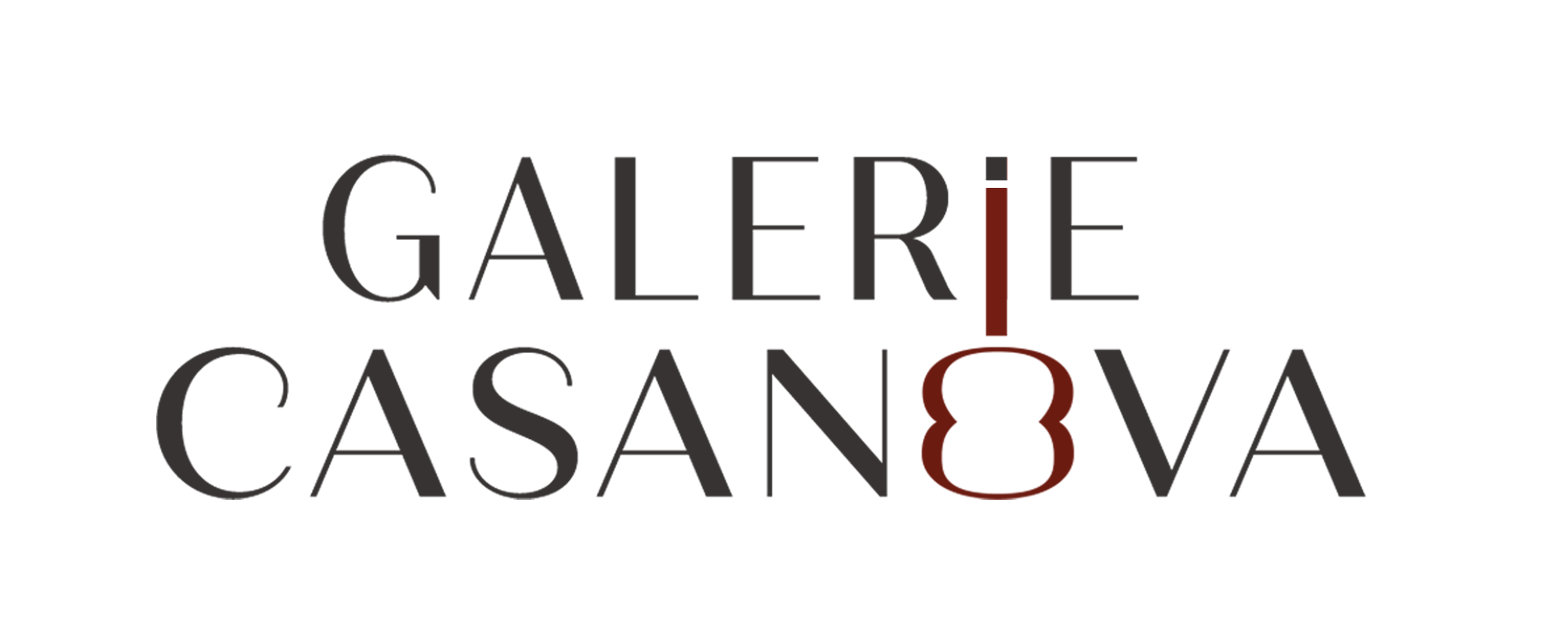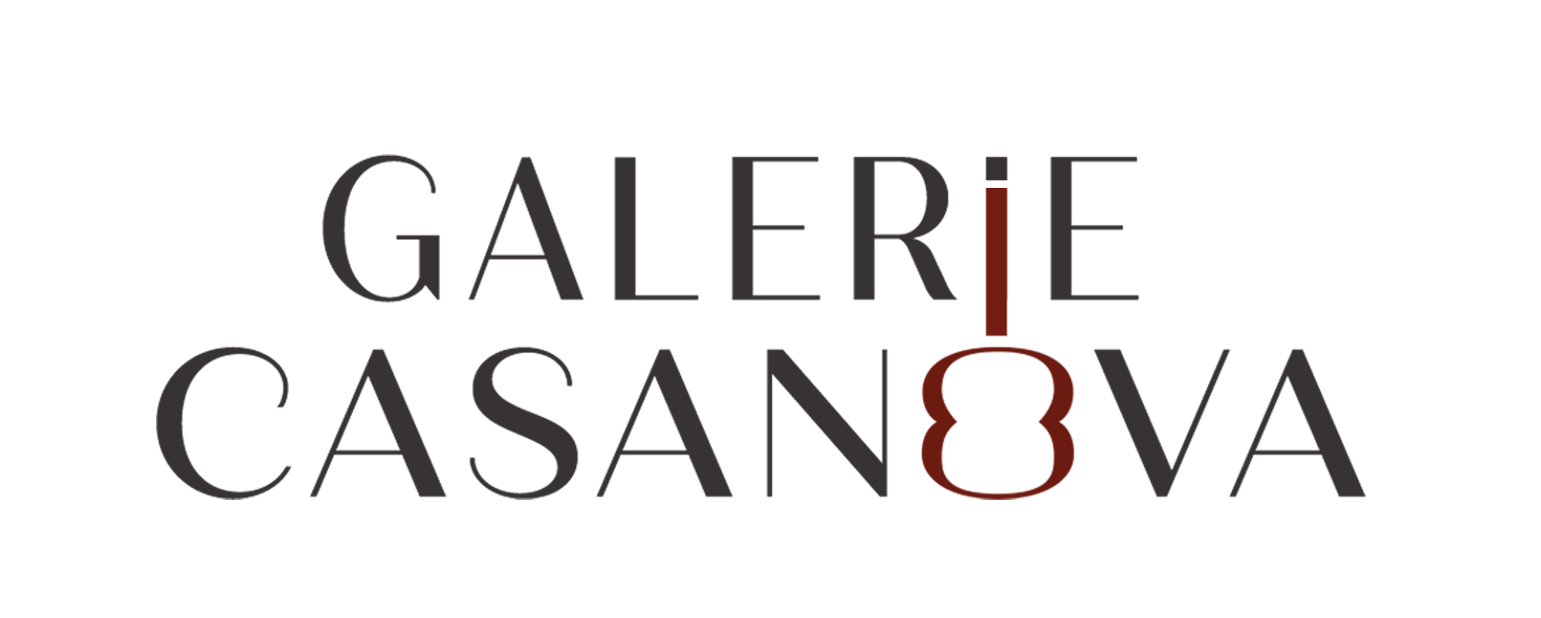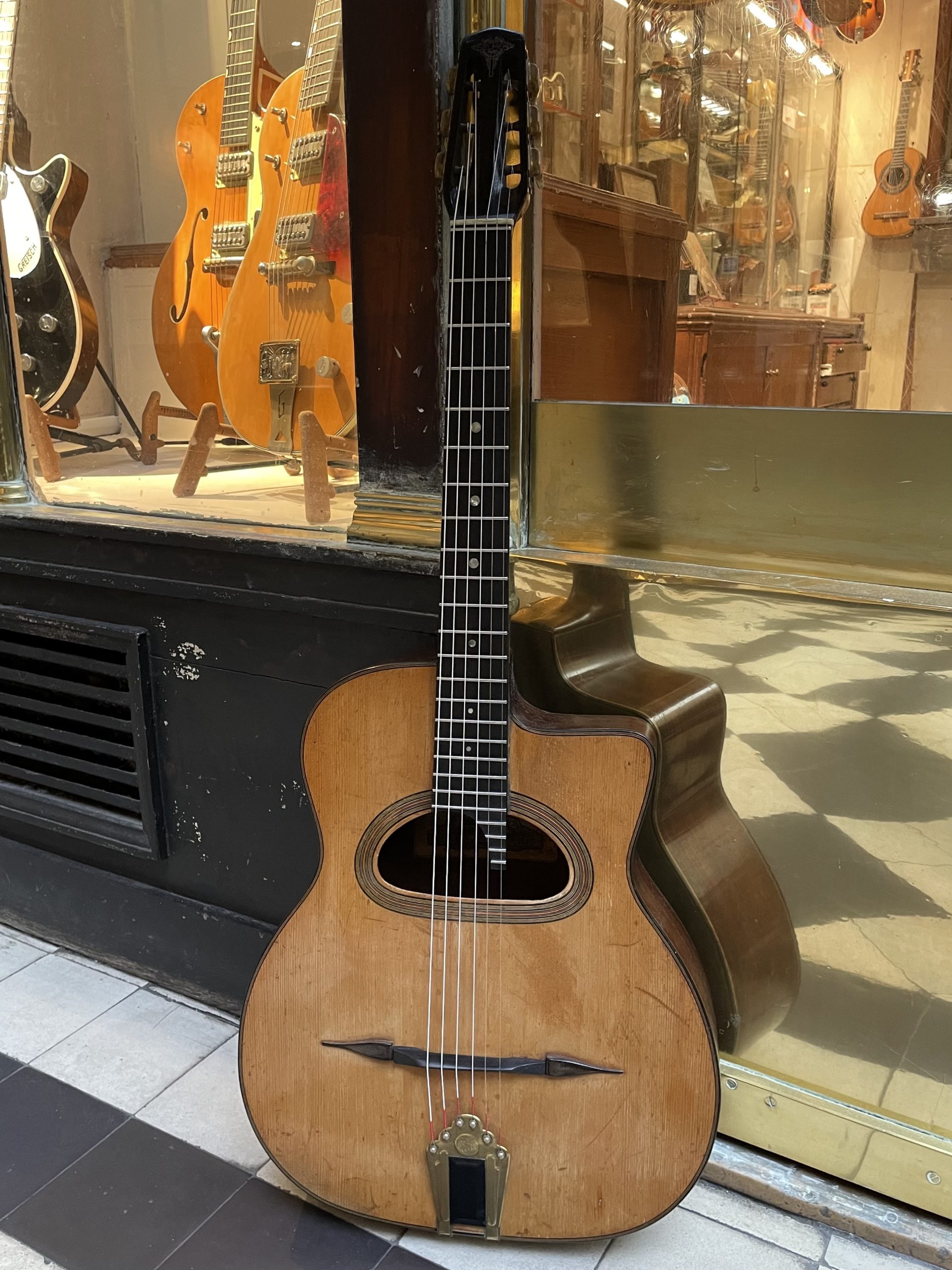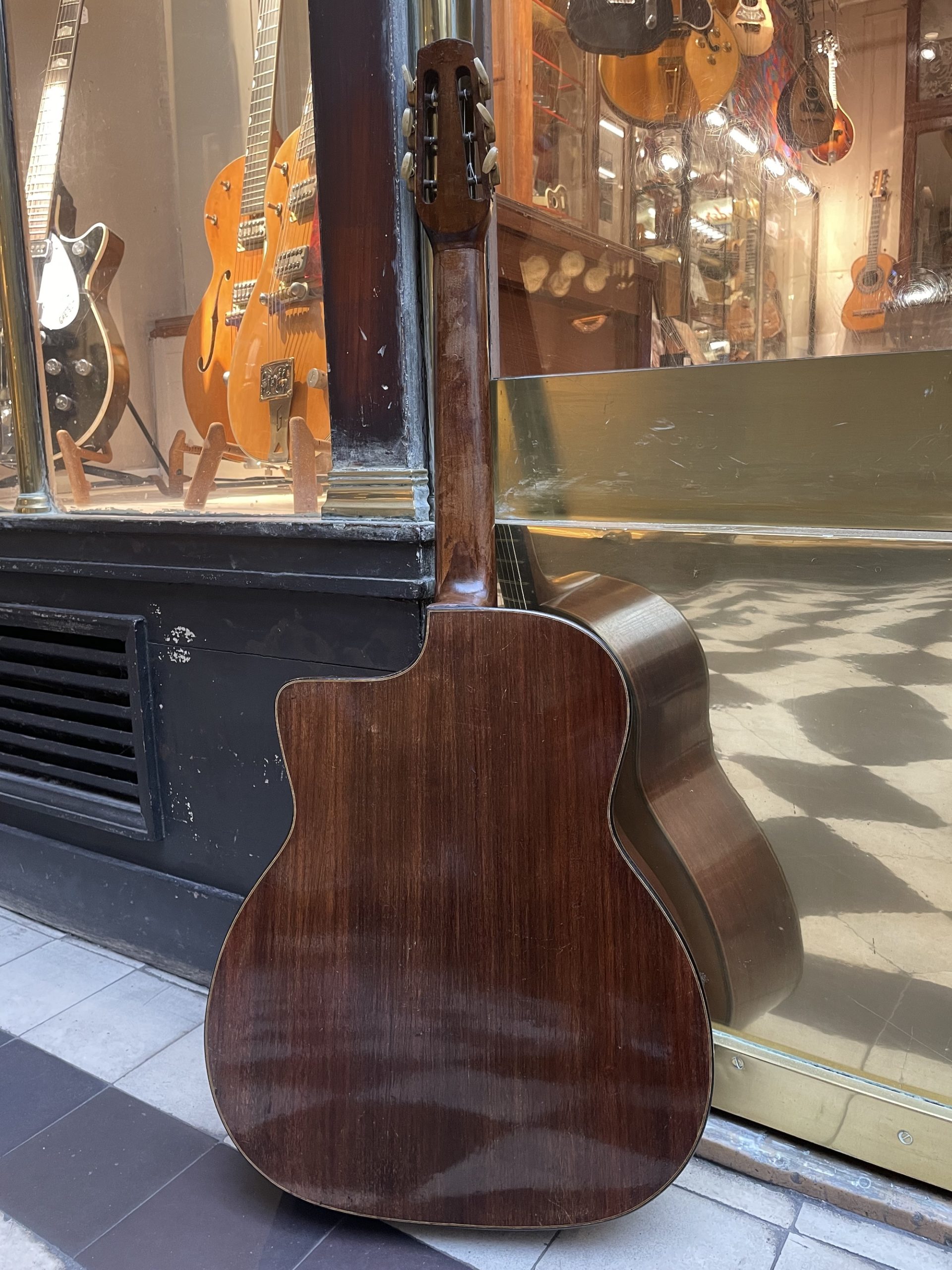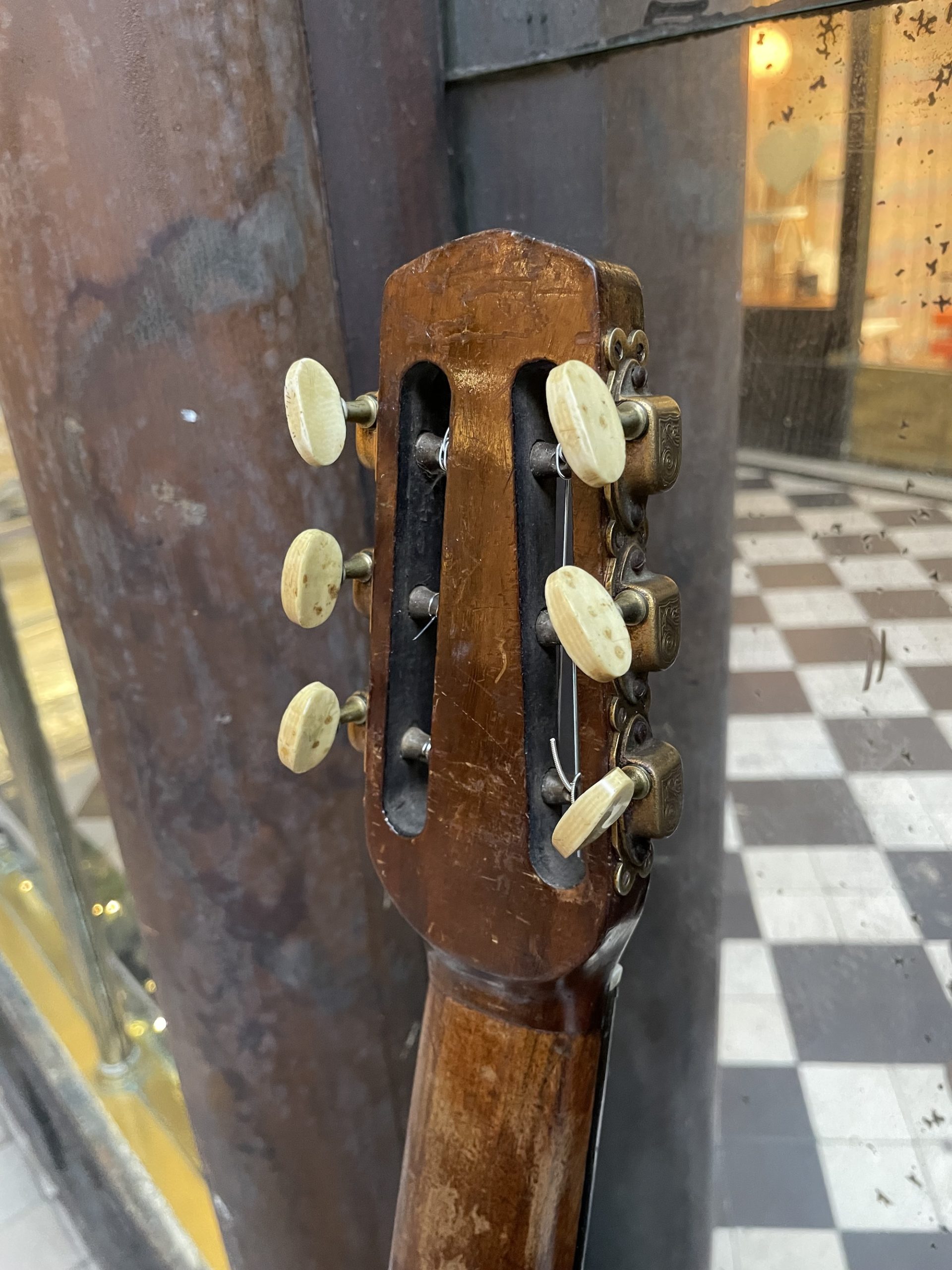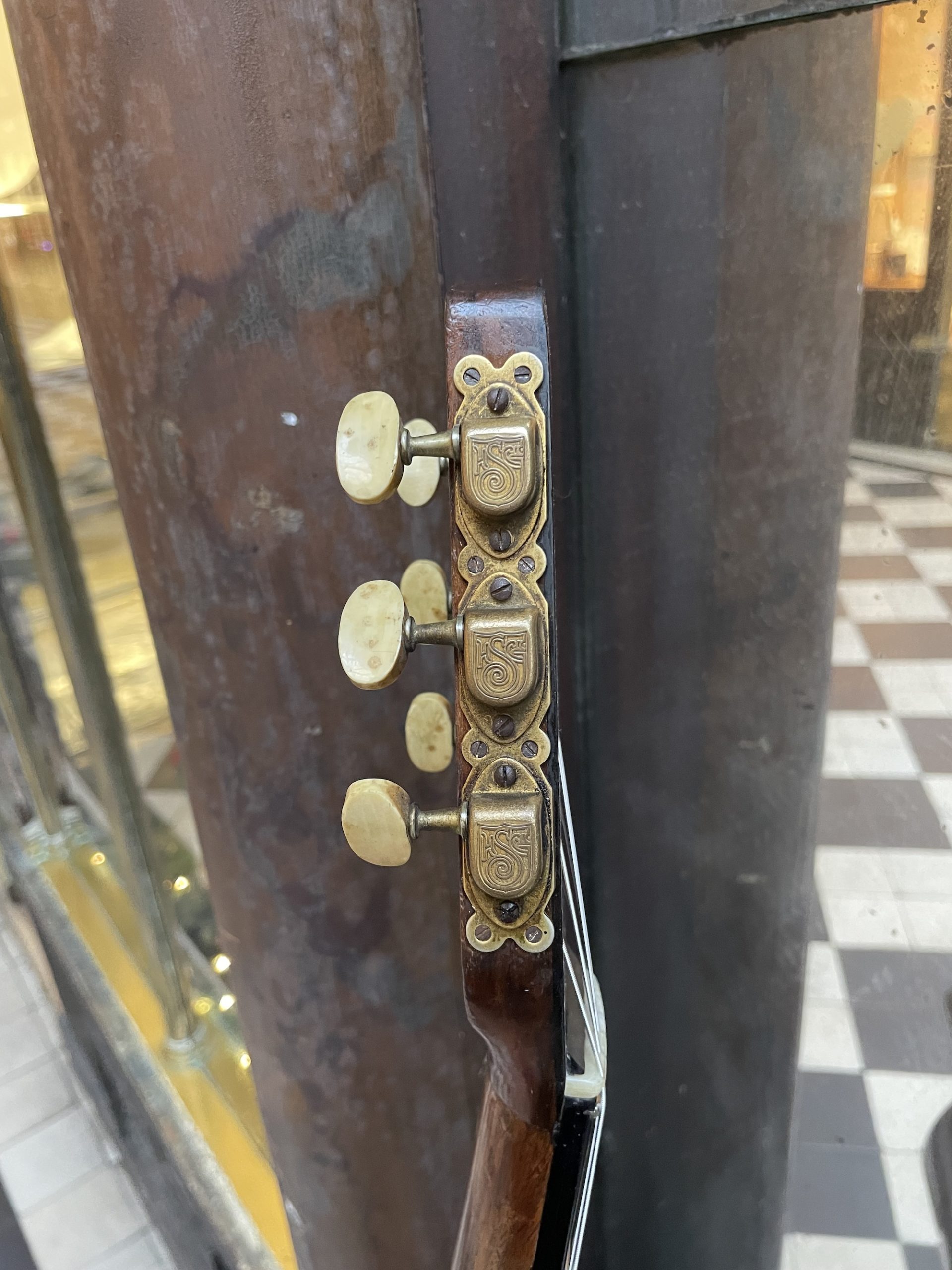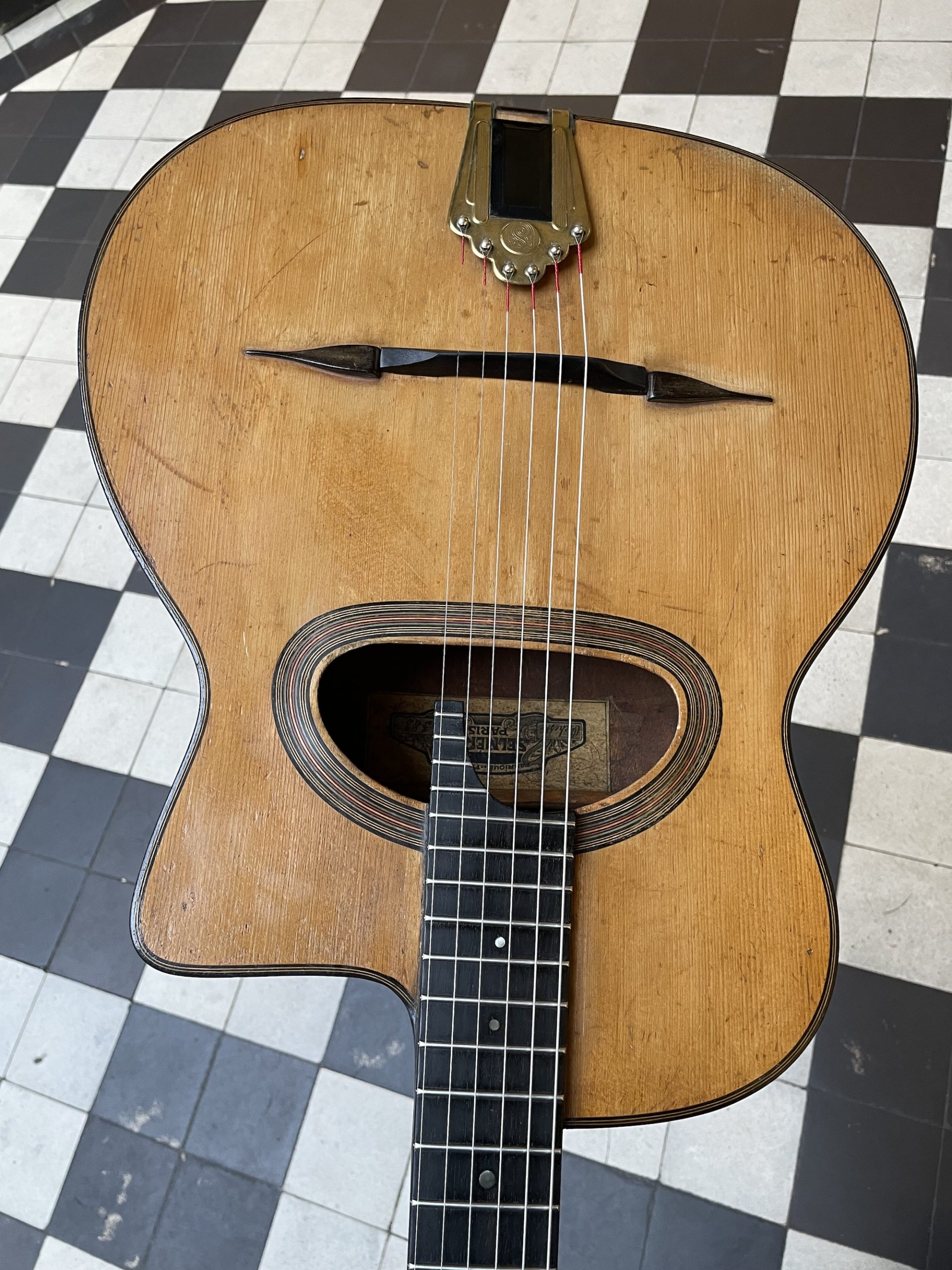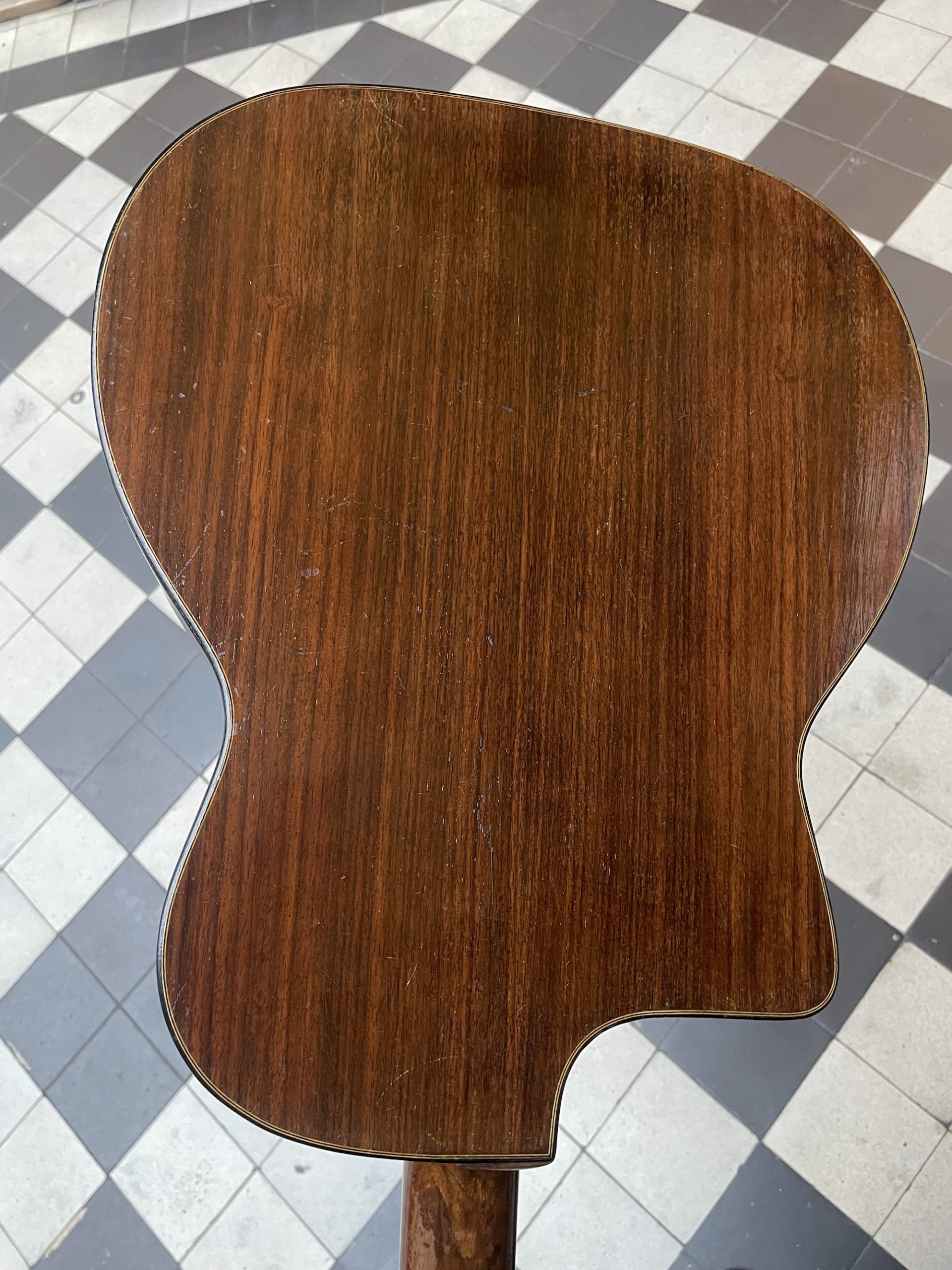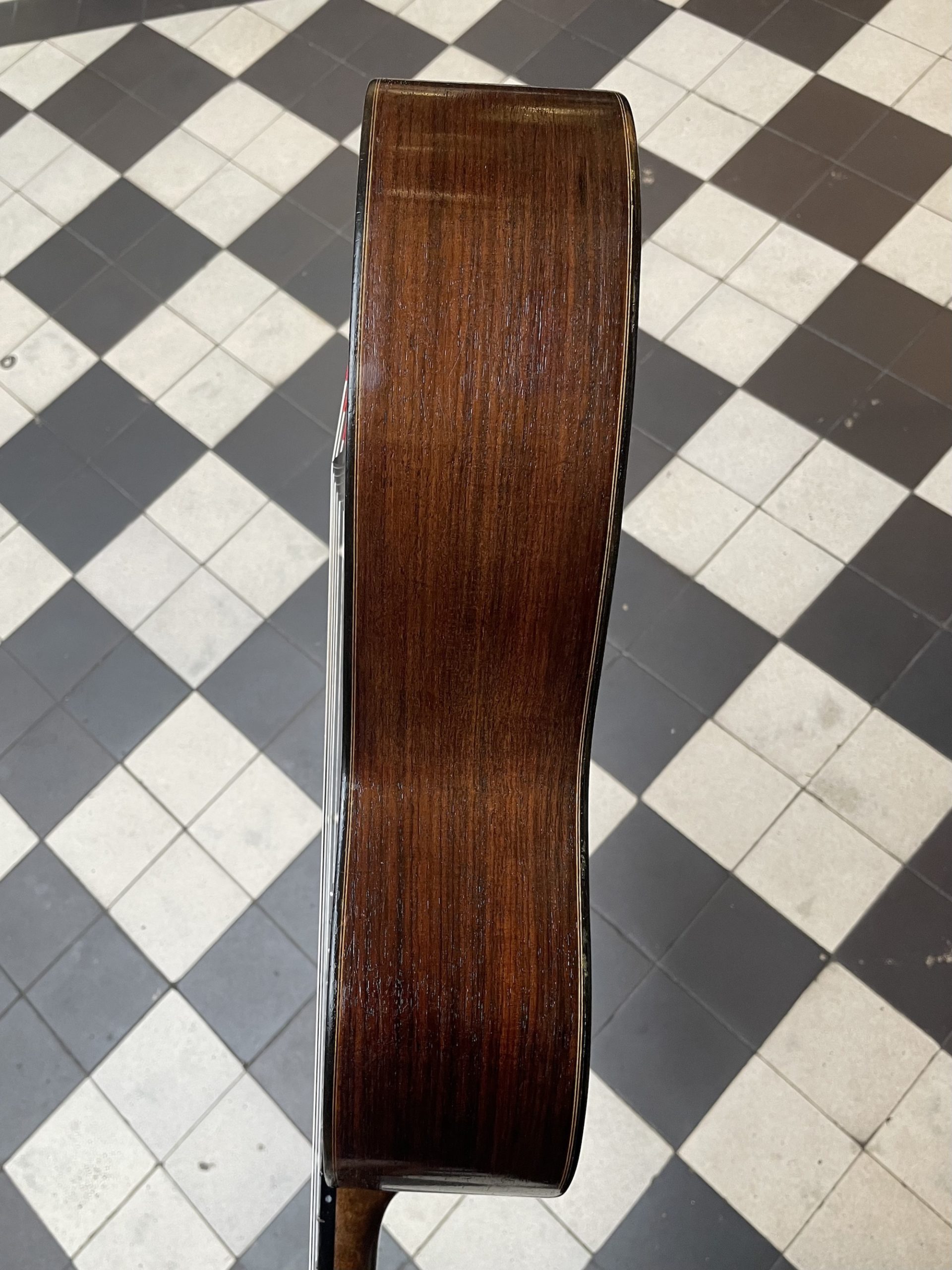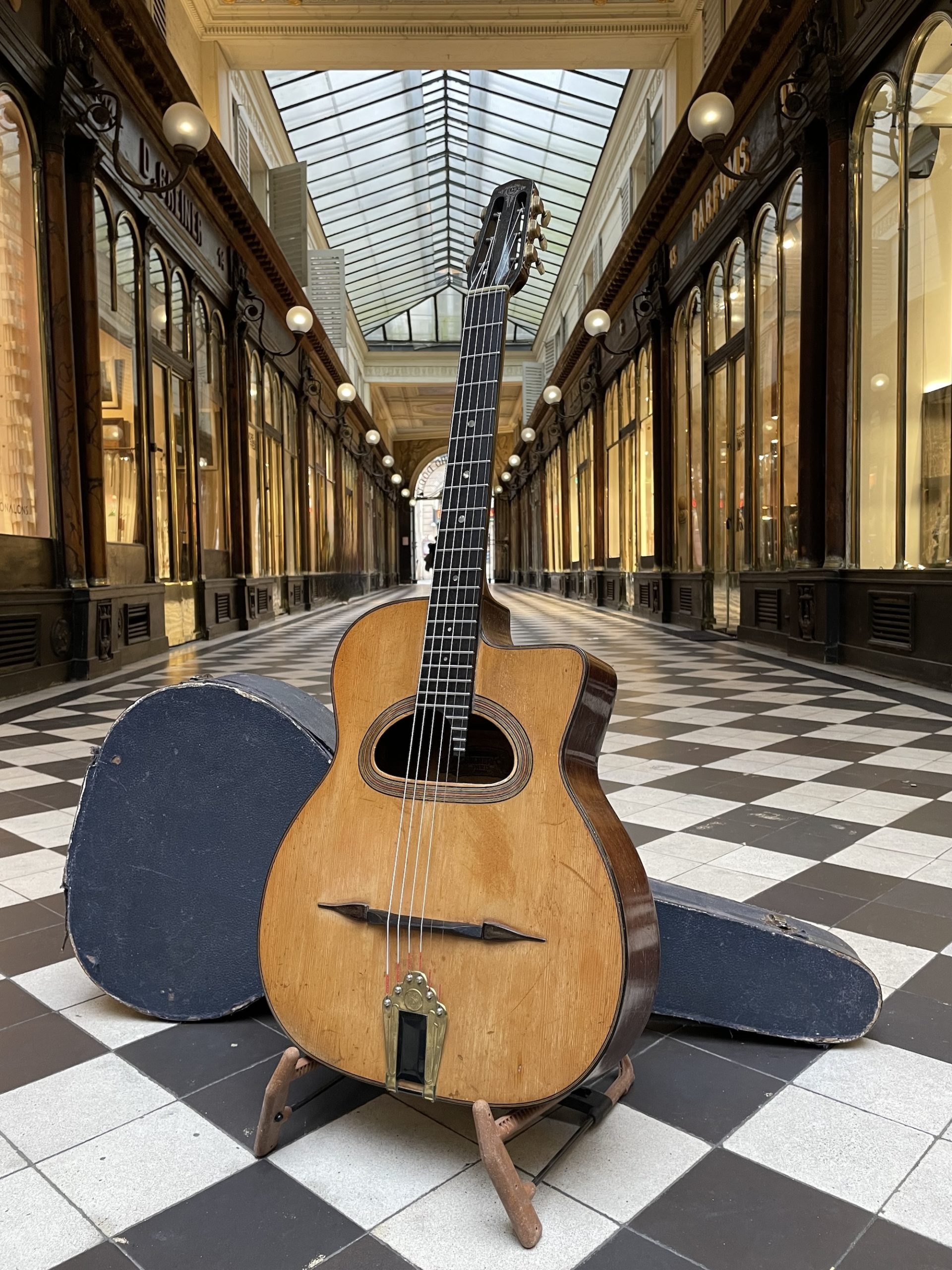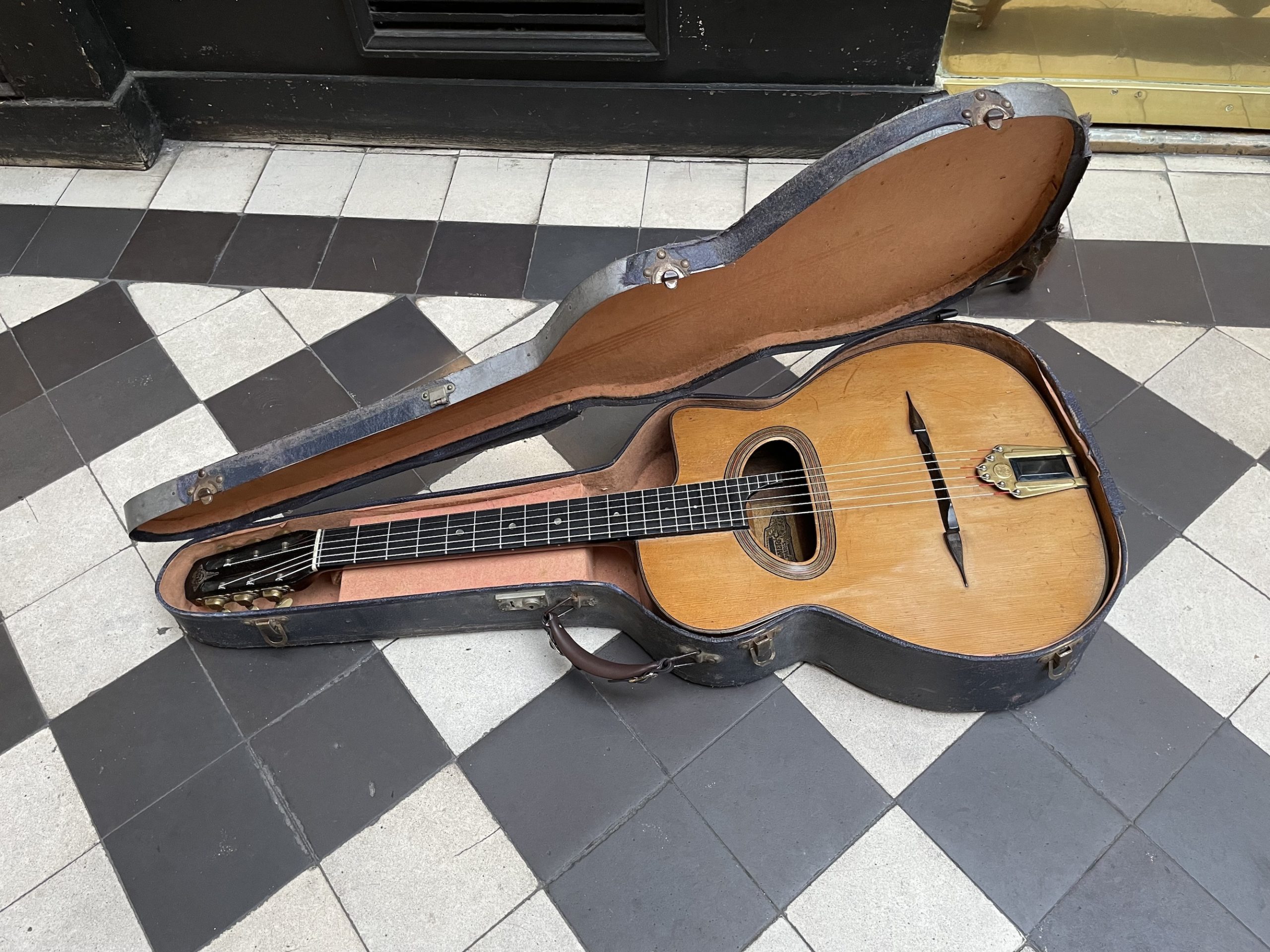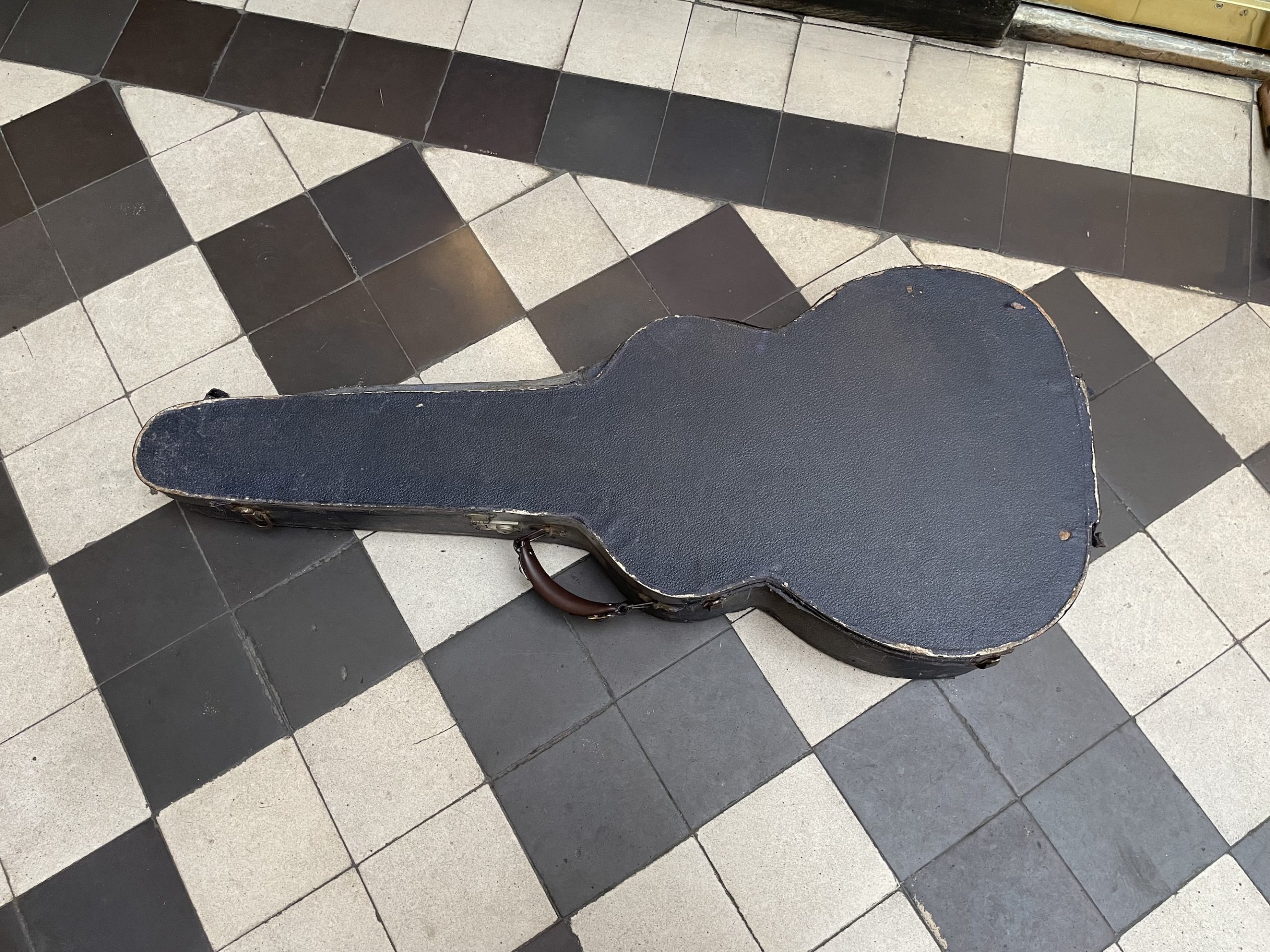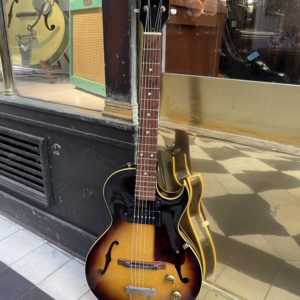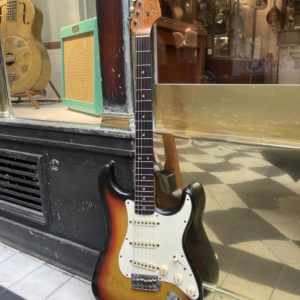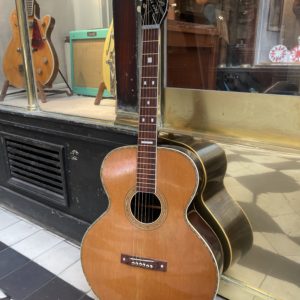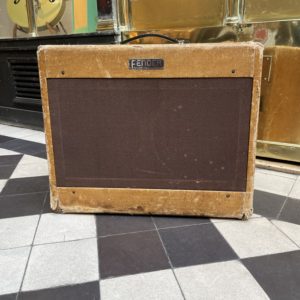1934 SELMER ORCHESTRE #383
The prices indicated correspond to the price in the case of payment in-store or by bank transfer. In the case of payment by credit card via the website, a processing fee of [3.25% + €0.25]* will be applied to the total amount of the basket, including delivery costs.
Exceptional Selmer Orchestre model, serial number #383, built in 1934, in superbly preserved condition.
You’ll play better with a Selmer… It was under this slogan that a new model of steel-stringed guitar was introduced in 1932, one of the last works of Mario Maccaferri before he put an end to his collaboration with the Selmer house in 1933.
The early 1930s saw the explosion of jazz orchestras, and with it an ever-increasing demand for guitars capable of competing in volume with the brass and woodwind sections of these ensembles. The Americans were the first to draw: they were almost a decade ahead, notably with the Gibson L-5, a 16-inch wide archtop constantly improved since its introduction in 1924 in order to increase its power, so that at the turn of the 1920s it had already become a guitar perfectly suited for playing in an orchestra – this is the use which will be eminently popularized by guitarist Eddie Lang. In the wake of the Gibson archtops will come the first instruments built by John D’Angelico and Stromberg, strictly dedicated to the musicians of the burgeoning big-bands and the proportions of which would quickly reach extravagant measures.
Faced with an invasion of instruments from across the Atlantic which reached the shores of the Old Continent, and particularly London where the jazz scene was flourishing, Mr. Ben Davis, director of the British branch of Selmer, recognized the potential opportunity that could bring to his own store the marketing of guitars meeting the demands of jazz players, only built in Europe. He reached out to Maccaferri, who was tasked with developing a guitar capable of competing with American archtops. The latter, with his experience with the luthier Luigi Mozzani in Cento, came up with a model whose lutherie was vastly borrowed from the Italian mandolin: the top of the instrument has a fold under the bridge, so as to maximize the pressure of the strings at this location and thus significantly increase the volume of the guitar. Another method developed to increase the projection of the instrument was a resonator attached inside its body with the aim of reflecting the vibrations towards the outside through the large sound hole on the top (this characteristic will be earn the Orchestre model the nickname Grande Bouche). The instrument will hit the mark, proof of which is its rapid adoption by many guitarists in England, France and elsewhere in Europe – and, above all, by none other than Django Reinhardt who will make it a legend… and the rest is history!
The model presented here comes to us in a magnificent state of conservation : it has a beautiful patina that characterizes guitars approaching 90 years old, and remains essentially intact! All of the original elements are here: the spruce top, the back and sides made of rosewood ply (a truly innovative material back in the 1930s!), the 3-piece walnut neck, each of these elements comprising the original varnish, the ebony fingerboard with its extension on the treble side offering access up to the 24th fret, the tuners and the stamped brass tailpiece both bearing the Selmer logo… The guitar, built around a year after the departure of Mario Maccaferri, already bears the signs of Selmer’s progressive distancing from the original characteristics established by the designer of the instrument, since it was built without a resonator: we can in this sense note that the original rectangular (uncut) label is glued on the bottom under the soundhole, and details the name of the model as well as the serial number #383 – this style of label commonly appears on D-hole models without resonators (notably Eddie Freeman models) up until the introduction of oval mouth models.
The guitar is not affected by any breaks, cracks or repair, and we set about refretting it and adjusting all its parameters to ensure perfect playability. At the end of this work the instrument gives us to hear its phenomenally powerful voice, so much so that we must admit that the Orchestra model perfectly fulfills the contract in terms of competing with the big American archtops. Beyond the volume, where the bass is often a little bit lacking on French jazz guitars, it is very present on this guitar and perfectly balanced with the treble so that the tonal palette is of great homogeneity – the model had been after all designed to fulfill the roles both of soloist and accompaniment instrument.
Sold in its original pegamoid case. Appraised at Galerie Casanova, sold with its certificate of authenticity.
SOLD
